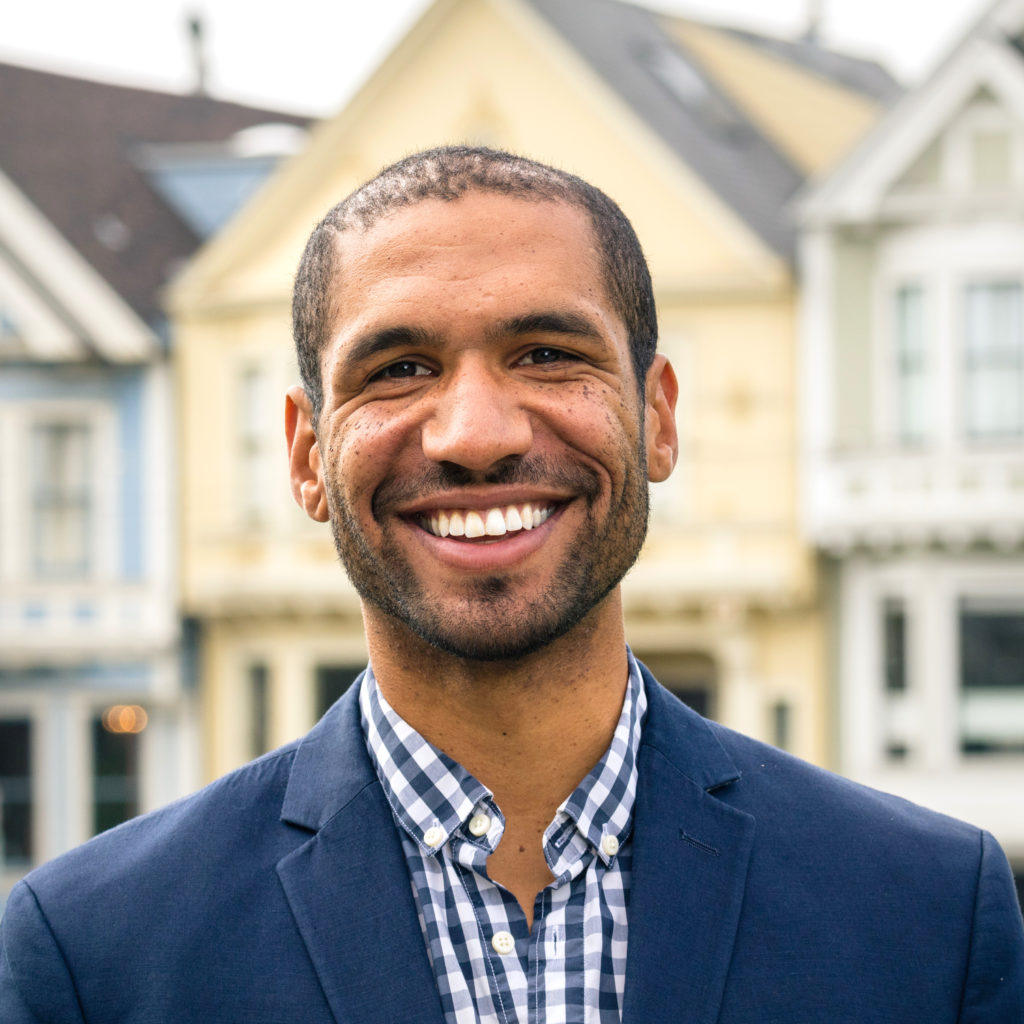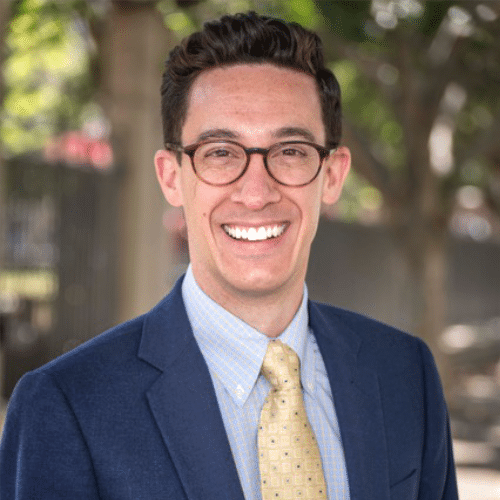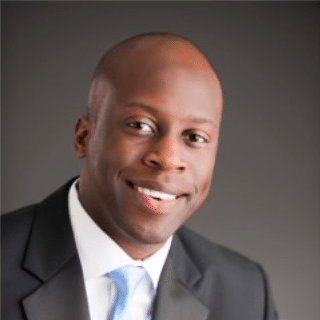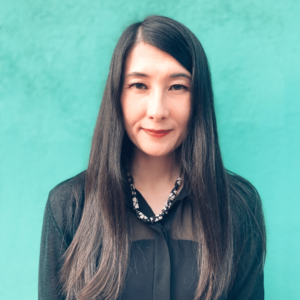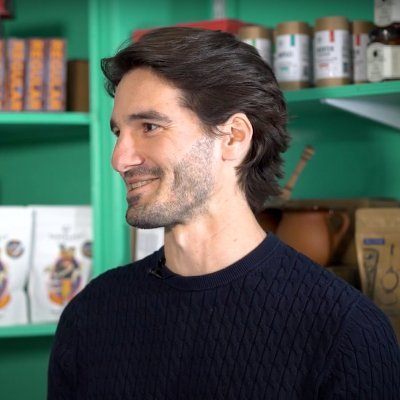
NuMarket was born out of the pandemic. Ross Chanowski founded the social crowdfunding platform in 2020 because he felt there wasn’t a way for communities to purposefully support the survival and growth of their local businesses. In an interview with The Boston Globe, Ross said that he wanted to develop a way for customers to meaningfully support the businesses they love while, yes, getting something in return.
On NuMarket, main street businesses raise funds for a variety of reasons like renovations, expansion, a popup, a new product line or even a second location. But instead of going to a bank to get a loan, they go to their customers, raising funds through contributions made in an online campaign on NuMarket. The payoff for each contributor is 120% of their money back in credits that can be used at that business. Contributors receive a bonus from the businesses they support, and those businesses get much-needed funds from the customers who love them! To date, NuMarket has helped 23 small businesses raise funds through successful campaigns with more coming. The amounts raised vary, but the largest (and first) raise was completed by Mamalehs, an iconic delicatessen in Cambridge, that raised over $185k to open a second location. Prior to launching NuMarket, Ross was living in the UK, completing his Master’s degree work in social innovation at the LSE. While there he found time to co-found Jungle, a collective of creative thinkers, designers and strategists growing companies with social impact, working to build product ideas with intrinsic impact. Their current project is Jungle Brew – cold brew coffee designed for socially impactful behavior. Past engagements for Ross include Allen & Gerritsen and Draftfcb and an internship with former House representative Barney Frank. Ross is currently an advisor at the Kenarava Group in Kenya, “a progressive company offering climate-smart agribusiness solutions for a healthier, sustainable future.”
Read the podcast transcript here
Eve Picker: [00:00:12] Hi there. Thanks for joining me on Rethink Real Estate. For Good. I’m Eve Picker and I’m on a mission to make real estate work for everyone. I love real estate. Real estate makes places good or bad, rich or poor, beautiful or not. In this show, I’m interviewing the disruptors, those creative thinkers and doers that are shrugging off the status quo, in order to build better for everyone. If you haven’t already, check out all of my podcasts at our website RethinkRealEstateForGood.co, or you can find them at your favorite podcast station. You’ll find lots worth listening to, I’m sure.
Eve: [00:01:04] Ross Chanowski wanted to help when the pandemic hit, so he founded the social crowdfunding platform NuMarket as a way for communities to purposefully support the survival and growth of their local businesses. He wanted to develop a way for customers to meaningfully support the businesses they love while yes, getting something in return. Ross has put his background in marketing and a master’s in social innovation and entrepreneurship from the London School of Economics and Political Science to good use. Numarket helps Main Street businesses raise funds in a compelling way. Make a contribution to a business you love now, and you’ll get goods and services back with a 20% bonus, ten bagels become 12 in your tummy, all the while supporting the bagel shop you love. It’s a lovely story about a lovely business. Please listen in to hear more. If you’d like to join me in my quest to rethink real estate, there are two simple things you can do: share this podcast and go to rethinkrealestateforgood.co where you can subscribe to be the first to hear about my podcasts, blog posts and other goodies.
Eve: [00:02:42] Hi, Ross.
Ross Chanowski: [00:02:44] Eve, it is great to see you and hear you.
Eve: [00:02:48] I’m really happy to talk to you today. And, you know, Numarkets is one of my favorite companies. I’m really excited to talk to you. So let’s talk about Numarket. NuMarket, I think, is a pandemic, baby, right?
Ross: [00:02:59] It is, yeah.
Eve: [00:03:01] When did you found it and why? And how?
Ross: [00:03:05] As we all have found, pandemic time feels like a very odd construct. So thinking about two years of being in it, I’m still not quite sure when it started. Now we got going, we launched into the world in February of 2021, and the impetus and the idea and research behind New Market, I think had been happening for years before that and a lot of interesting in different ways. But when the pandemic hit, there was a clear insight that everyday customers of businesses and people in communities desperately wanted to do something positive for the places that that they love and that they need. And we were all struggling to find ways to do that. We were hashtagging on Instagram. We were tipping our delivery drivers and bartenders on the way out. We were buying gift cards, kind of doing anything we could, but it definitely didn’t feel like we were giving the kind of support that we could. And on the flip side, businesses were finding it incredibly difficult to get financing at the time to survive. But for decades before that, to to thrive and to open. And so there was something of matching those two up, this desire to support and be a critical part of independent businesses and businesses that couldn’t find avenues to financing that worked for them. So that’s where NuMarket came from. And what we do is we create crowdfunding campaigns for those businesses to raise money from their customers and community. But the contributors to those campaigns, they get more back than what they put in, 20% more, actually, as credits to use towards the business over time. So, it’s not a donation. You’re getting a lot more back than what you put in and you get to use it towards the business in the months that follow, in the years that follow. So, it generates this really interesting economic engine around these important and critical independent businesses all around us.
Eve: [00:05:23] Interesting. So, I’m having a thought. Could Small Change run a campaign on NuMarkets and offer people some investment coupon for future use?
Ross: [00:05:37] You know, I know we’re recording and if there are any regulators listening, we have to check that out first.
Eve: [00:05:43] No, this is, well, what’s interesting and this was going to be my next question. So NuMarkets doesn’t fall under any securities law, does it?
Ross: [00:05:52] Right. So, we’re issuing promotional credits. That’s kind of what our model entails. You are not receiving back cash. It is not a security. It is in the promotional credit category where you’re getting that 20% back as essentially a voucher to use towards goods and services, not that different from a gift card. And we’re very clear about that with everyone involved in knowing that there are some risks involved. But you’re getting this great chance to support a business. And unlike some donation-based platforms, where your money is going towards incredible causes, this is going towards businesses, for profit businesses like restaurants, yoga studios, online platforms, things like that.
Eve: [00:06:44] Right. I don’t think it would break any securities law, but we’ll talk about that later.
Ross: [00:06:50] I didn’t realize this was going to be a whiteboarding session.
Eve: [00:06:53] No, I mean, it really just occurred to me. My favorite Korean restaurant right next door, if they came to you and they did a campaign and I, what do you call it, make a donation. It’s not really a donation. Yeah, a contribution. It’s a contribution. So, it’s some way between investment and donation. So, make a contribution. Then thereafter, I could buy their bibimbap for 20% less.
Ross: [00:07:19] Exactly. Yeah. And you could buy their bibimbap, you could buy drinks, you could get anything that’s in there. Goods and services that they’re offering, which is one of the things we found has been a really big value add, where contributors get to use it, how they’d like to. And for businesses, they get to do exactly what they do best, which is just run their business. You don’t need to change your offering. You don’t need to offer any special packages or anything like that.
Eve: [00:07:47] So what do these businesses I mean, what do these businesses generally raise money for?
Ross: [00:07:54] Yeah. It’s we find a really big mix of things, new locations, new product lines, being able to move from, let’s say, a brick-and-mortar model to a nationwide or worldwide delivery service or the opposite. We find a lot of delivery, whether it be home delivery locally or nationally, moving into more of a permanent space. A lot of pop ups that are turning into brick and mortars. So, we’re at this point where some really amazing, vibrant and oftentimes funky businesses get to fund their dreams and get that validation that those dreams are real from their funders who turn into their best customers.
Eve: [00:08:45] That’s pretty cool. So, walk me through how a campaign works.
Ross: [00:08:50] Yeah. Campaigns, they last for 30 days, and you get a unique URL and campaign page designed with content that shows sort of who you are as the business owners, what your business is, and really gets to the soul of why you’re doing what you do. And anyone with access to a credit card can contribute during that 30-day period. You can gift contributions if you’d like to, to others, which we find a lot. You can leave testimonials that really show how much a lot of these great independent businesses are loved. So, it’s really special there. And then after the campaigns end, what we do is we handle all of the credit distribution, and we start doing that one month after the campaign ends. And that one difference for us of how our credits work is that we break them up monthly. So, we’ll start sending you your credits just one month after the campaign ends super quickly. And we do that monthly for six months. The way that math works out is, let’s say you contribute $100 to Eve’s Cafe. You would get back a total of $120 in credits, and you’d get $20 worth of credits every month.
Eve: [00:10:09] Okay. And this is to make sure that the funds are raised to spread out for the business as well.
Ross: [00:10:19] Exactly, yeah. And what we found happens quite often is you’ll have $20 worth of credits in month one and you’ll go in and you’ll spend those 20 credits and spend above them. So, there’s this really great engine around supporting independent businesses in a really, really strong way, not just as funders, but as your most loyal customers.
Eve: [00:10:43] How did you come up with that formula?
Ross: [00:10:46] Just trying to understand, I think, and talking with a lot of business owners and understanding the problems that are that are facing them and just taking a human first approach of, you know, just talk to us. Tell us what’s going on. Tell us why when you look for institutional funding, it’s difficult. Tell us why when you might find that funding, it’s difficult for you. And then, and then iterating. You know, our model wasn’t always exactly like this. We have great feedback loop and we’re super close with our customers and have a willingness to make those changes when we see that they’re needed.
Eve: [00:11:28] Interesting. Okay. So, I have to ask then, what percentage of your customers are not white male?
Ross: [00:11:38] Yeah, we don’t sort of publish exact data, but it’s a vast, vast majority.
Eve: [00:11:45] So often they fit into that minority or woman-owned business category that we all know does very poorly in the fundraising world.
Ross: [00:11:56] Yes. Yeah. The statistics on that are shocking.
Eve: [00:12:01] They’re really shocking. I think something like 2% for women owned businesses it’s ridiculous.
Ross: [00:12:07] Yeah, we’re very excited about the opportunity that we have in front of us to try to change that. And we’re at this point way above a majority of the businesses being led and managed by women and people of color.
Eve: [00:12:23] So what’s their average amount raised for businesses that you’ve helped so far? And how many have listed campaigns with you?
Ross: [00:12:31] Yeah, we’re up over 30 right now in the past year and at a pretty solid growth rate, which is exciting but also daunting, as you know. Yeah. And the average contribution amount, which I think is one piece of of data that is that’s pretty important for us, is around $150 per person. So, and that’s kind of the spot that we like to be in, which is no matter if you’re putting in $10 or 10,000, what you’re getting back is going to be the same. You’re getting that 20% back. And so we’ve found all different types of people from all different income levels who are able to participate and get that 20%.
Eve: [00:13:19] It must also depend on the business what value $150 has. Like it’s going to be different for bake shop than for something that sells more expensive goods, right?
Ross: [00:13:31] Yeah. Yeah, we found some really interesting, I think at this point slightly anecdotal, data on that of how do contributions change based on your average cost of goods. What’s been really interesting for us is the success of recurring purchase models. So, things like subscriptions, we’ve had some everything from farm delivery boxes to dumpling delivery and those have done incredibly well. I think there’s something to the idea that you know, as a customer that you’re going to be either going in or getting delivered something every week, every month. So, it makes a lot of sense to support and get 20% more.
Eve: [00:14:19] Interesting. Okay, let’s talk about geography. Where where do you do this right now?
Ross: [00:14:23] Yeah, we just kind of moved into Nationwide in the US. So, we started off in Boston in New England with a really, really great community of customers. And we, just this month, started launching campaigns that are across the country. What’s been really interesting, given what’s going on in the world right now, is that where you’re based has taken on an entirely new meaning on both sides of the platform. So, for contributors, people are living all over the place. Maybe you’re spending three months out of the year in New York, three months out of the year in Albuquerque, three months out of the year and in Indonesia. And for businesses, it’s a little bit of the same. You might be based in Los Angeles, but most of your customers are in Miami or in Topeka or wherever it may be.
Eve: [00:15:14] Interesting. So, do you find people contributing who are not customers or might be new customers for these businesses? I suppose the question is, is there crossover between campaigns? Are you building your own contributor base? Yeah.
Ross: [00:15:31] There is, yes. And we’re still early on. And I think that number will, we hope, grow. But we have found a really strong amount of repeat contributors, whether that’s our doing or the fact that there are just some really great businesses in similar communities, it doesn’t really matter to us. We’re just excited that people want to see this model grow and they want to see great independent businesses grow. We’re just there as the tool to make that happen.
Eve: [00:16:03] You said you’ve gone national. Where have you had campaigns?
Ross: [00:16:08] We’ve had some in California. We’ve had some in Florida. We’ve had a lot in New England, Connecticut, Boston, up in Maine, expansion into Maine, I should say. And in the next few weeks, we’re going to have a little bit more dotting across the country.
Eve: [00:16:26] Okay. None in Pittsburgh yet, right?
Ross: [00:16:29] Not until you help us out Eve. That’s what we need.
Eve: [00:16:31] I’m going to help you out, I’m going to help you out!
Ross: [00:16:33] You’ve got to spread the word.
Eve: [00:16:35] I think it’s a really great idea. So, do you think this model might become mainstream?
Ross: [00:16:40] We’re pretty confident that it will if we do our job well. I think that’s kind of the feeling that we all have right now, which is if we can continue to spread the word about it and make it known to more independent business owners that this is an option and that there is great support and there’s a way to engage your community of customers, we do think it can go mainstream. I guess it depends on your definition of mainstream. We’re not focused on world domination as a tech platform. I think we’re focused on being an option for every independent business that wants that option. Yeah.
Eve: [00:17:20] What’s your revenue stream? How do you get paid?
Ross: [00:17:23] Yeah, it’s pretty simple. We take a percentage of the funds that are raised in the campaigns. We have no subscription fees, no upfront fees. So, the only time businesses see us in their accounts is when we send them their funds at the end of the campaign.
Eve: [00:17:40] Shifting gears a little, you know, I looked at your background, which is very interesting, and community and social impact are clearly a really big theme in your life. There must have been a story. There’s got to be a journey that led you to NuMarkets, and I’d love to hear it.
Ross: [00:17:57] Yeah. Eve, if you recall to how we met, one of the big themes of that accelerator was Origin story. And unfortunately, there’s no great origin story. It’s, I guess, the seeds of how NuMarket came about in my background, were doing work and research that took me to some places all over the world and getting to see how different financial models work, how different businesses engaged in commerce and getting a lot of exposure to just difference.
Eve: [00:18:38] But to be fair, you’ve got a masters in entrepreneurship and social impact. So, you you’ve had a path towards this, right?
Ross: [00:18:46] Sure. Yeah, absolutely. And I think what that sort of academic piece of my life did was to really frame around the idea of understanding the problem from a very human lens. So instead of taking an idea and overlaying it onto people, it’s let yourself understand the challenges and day to day problems that are facing real communities and try to design ideas and business models and products against that. I can remember being in very specific instances and looking at the way that people have funded independent businesses all over the world, the ways that they’ve been able to create financial inclusion and just being so interested and impressed and engaged by those experiences that in some odd way Eve, leads to you running down the stairs one day and saying, Oh, I think I think now it makes sense. I think now NuMarket is ready. I think we’ve got the model.
Eve: [00:19:56] Right, I get it. But there’s another company that you’re involved in that intrigues me and I’ve just got to hear about, and that’s called Jungle. Tell me about that.
Ross: [00:20:05] Yeah, so Jungle started off sort of consulting and working with other corporates on how to increase their community impact through their revenue models. And in a strange twist and turn of events, it ended up being a coffee company that I started a few years ago, a handful of years ago now, with the idea that coffee is the most ubiquitous and habitual product that probably exists in the world where I’m holding one right now, we all…
Eve: [00:20:40] Here’s mine.
Ross: [00:20:40] I shouldn’t say we all. There’s yours. Exactly. It’s something that many people across the world really understand and purchase, and it affects over 25 million people across the supply chain. So, ended up starting a cold brew coffee company in in London a handful of years ago and a very different, of course, business model to what NuMarket is. But I think a lot of the partners and customers that we had are the same people and same type of people that we’re supporting at NuMarket now, owners of coffee shops, owners of bakeries, restaurants. We just launched a campaign for a coffee producer in Lawrence, Massachusetts, and it’s pretty cool to see, see some of the same challenges that we were facing in the coffee world and be able to support people doing it themselves now through NuMarket.
Eve: [00:21:38] Very cool. You’ve developed a thesis which is really fascinating. What do you think needs to be fixed in the world of small business? I know that’s a really big question, but I’m asking it anyway.
Ross: [00:21:50] Yeah, well, you know, there is, there’s no doubt that there’s power in commerce and who holds the purse strings. And I think the thing that we’re focused on from a systemic change perspective is allowing everyday customers to be the arbiters of the success of these businesses. So, if you’re the ultimate end user, you’re the person who’s buying the product. If we allow those same people to decide who gets the funding to start and grow, I think we’ll see a big, big change towards businesses that are important, that are independent, that are really, really doing great things for their communities, as opposed to businesses that have one very clear single bottom line, which is how fast can we grow? How quickly can we increase our margins as opposed to can we make people’s lives better and also make money at the same time?
Eve: [00:22:46] So if you were going to leave your mark on the world, what would that look like? How would you like to leave your mark on the world?
Ross: [00:22:54] Eve, that is such a big question.
Eve: [00:22:57] It is! But you’re pretty close, I think, you know.
Ross: [00:23:01] Yeah, not even.
Eve: [00:23:03] Okay, I didn’t ask. What would your gravestone say?
Ross: [00:23:09] Oh, that’s a good one, too. Well. You know, I think it would just be. You know Eve, I don’t know and I’m going to be honest, I think we’re supposed to answer these questions with authority and strong character and all of that in these types of settings. But I think it’s okay to not know and to still be figuring that out. And right now, I think what I want my mark to be today, it’s just to have done worthwhile work.
Eve: [00:23:46] I’m pretty much in the same place. She led a good life. She was a decent person. That’d be pretty good. Yeah.
Ross: [00:23:53] And had a few good cups of coffee. Right, right. And a few bad ones too.
Eve: [00:23:58] Okay. So, I have to ask, ‘cause you sound pretty prolific there, what’s next for you? Like, are you focused solely on growing this business or is there something else you’re cooking up?
Ross: [00:24:10] I think I’m very laser focused on growing NuMarket in a way that is positive on a lot of levels. But I think there are lots of challenges and opportunities to solve those challenges out there. And I hope that whether it’s through NuMarket or through other efforts, that I and our team can start to tackle those and find some great momentum towards this idea of mutual value models. How can everyone involved in the equation of commerce or economies put something in and get more out from doing so? So, we’ll see where that takes us and we’ll see whether that’s tomorrow or ten years from now or ten weeks from now.
Eve: [00:25:01] Well, it’s fascinating. And I have one final question, if I find a business for you in Pittsburgh, will you come?
Ross: [00:25:08] Absolutely. I’ll come tomorrow. Let’s have some Korean food. Let’s have some good coffee.
Eve: [00:25:14] It’s a deal.
Ross: [00:25:16] We should hang up and stop recording now so we can start, we can start creating spots
Eve: [00:25:20] Okay. Thanks very much for joining me.
Ross: [00:25:24] Thank you, Eve. It was a pleasure.
Eve: [00:25:35] Ross Chanowski is passionate about building businesses that are needed and that make a difference. It looks like NuMarket is well on its way to making a mark.
Eve: [00:25:56] You can find out more about this episode or others you might have missed on the show notes page at our website RethinkRealEstateForGood.co. There’s lots to listen to there. A special thanks to David Allardice for his excellent editing of this podcast and original music, and thanks to you for spending your time with me today. We’ll talk again soon, but for now, this is Eve Picker signing off to go make some change.
Image courtesy of Ross Chanowski

